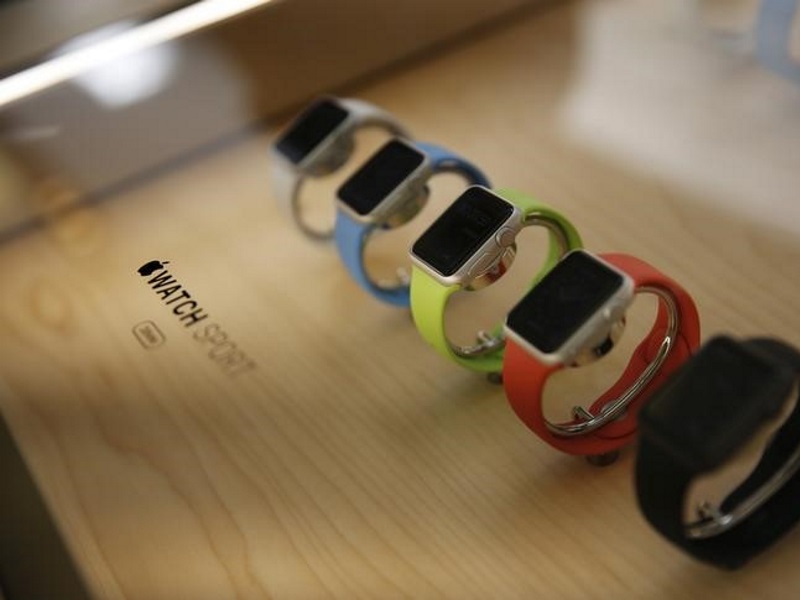- Home
- Wearables
- Wearables Features
- Swiss Watchmakers Change Tack to Embrace Smartwatches
Swiss Watchmakers Change Tack to Embrace Smartwatches

Shipments of smartwatches overtook traditional watches in the final quarter of 2015, according to Futuresource Consulting.
While their rapid rise has so far had little impact on Swiss watchmakers, because of the latter's focus on higher prices, the industry started to look seriously into the potential for luxury smartwatches after the success of the Apple Watch last year.
Now the race is on to grab a chunk of a smartwatch market expected to grow from $1.3 billion in 2014 to $117 billion in 2020, according to researchers Smartwatch Group.
"Next year, we'll have a real collection, a new version with six to eight models," LVMH's head of watches and jewellery Jean-Claude Biver told Reuters at an industry fair this week, referring to smartwatches at its Swiss brand TAG Heuer.
TAG Heuer partnered with U.S. technology firms Google and Intel last year for its TAG Heuer Connected watch, and said the first 15,000 units offered at just under CHF 1,400 ($1,446) apiece sold out quickly.
"We totally underestimated demand, we were too cautious," Biver said at the Baselworld watch and jewellery fair, adding the brand had invested about CHF 10 million in the project so far.
He said he was expecting to sell a further 40,000 to 50,000 pieces this year. From September, they would be assembled in Switzerland on a line set up by Intel.
"Nobody knows what will happen with smartwatches. Of course, we could just watch this train from afar to see where it goes, but I prefer to be on board," Biver said, adding connected watches could ultimately represent a third or even half of TAG Heuer's sales.
Also at Baselworld, Swatch Group's Tissot, one of the more affordable brands of the world's biggest watchmaker, presented its first connected model, the Tissot Smart-Touch, that lets users connect to their smartphone as well as to other external services, such as weather stations.
"Swatch Group is the only Swiss watchmaker able to do a smartwatch on its own," Tissot Chief Executive Francois Thiebaud told Reuters. Swatch Group launched a connected watch under its Swatch brand about ten years ago.
Thiebaud said the Smart-Touch's advantages over existing smartwatches were its much longer battery life of up to one year, rechargeable via a solar panel, and the fact the watch continued to function as a "normal" watch once the connected technology was outdated.
"Other smartwatches are miniature smartphones on the wrist, while our product's first purpose is to indicate the time," Thiebaud said. He said the brand was aiming to sell 20,000 to 40,000 Smart-Touch watches in the first year.
The Smart-Touch, whose battery is made by Swatch's Renata unit, will be available from late autumn or early winter and cost around 1,000 francs.
While most Swiss watchmakers lack the technological skills and distribution network to make and sell smartwatches, tech giants clearly value their know-how in watch design.
Jeweller De Grisogono, for example, teamed up with South Korea's Samsung Electronics last year, and presented a diamond-studded version of Samsung's Gear S2 smartwatch at Baselworld, aimed at attracting more women to the category.
"This is something very new in the smartwatch category. It's a real luxury watch," Fawaz Gruosi, founder of De Grisogono, said of the limited edition watch that will sell for 14,900 francs.
According to Futuresource, women account for 60 percent of all watch sales, but only 34 percent of smartwatches.
© Thomson Reuters 2016
For the latest tech news and reviews, follow Gadgets 360 on X, Facebook, WhatsApp, Threads and Google News. For the latest videos on gadgets and tech, subscribe to our YouTube channel. If you want to know everything about top influencers, follow our in-house Who'sThat360 on Instagram and YouTube.
Related Stories
- Samsung Galaxy Unpacked 2025
- ChatGPT
- Redmi Note 14 Pro+
- iPhone 16
- Apple Vision Pro
- Oneplus 12
- OnePlus Nord CE 3 Lite 5G
- iPhone 13
- Xiaomi 14 Pro
- Oppo Find N3
- Tecno Spark Go (2023)
- Realme V30
- Best Phones Under 25000
- Samsung Galaxy S24 Series
- Cryptocurrency
- iQoo 12
- Samsung Galaxy S24 Ultra
- Giottus
- Samsung Galaxy Z Flip 5
- Apple 'Scary Fast'
- Housefull 5
- GoPro Hero 12 Black Review
- Invincible Season 2
- JioGlass
- HD Ready TV
- Laptop Under 50000
- Smartwatch Under 10000
- Latest Mobile Phones
- Compare Phones
- Moto G15 Power
- Moto G15
- Realme 14x 5G
- Poco M7 Pro 5G
- Poco C75 5G
- Vivo Y300 (China)
- HMD Arc
- Lava Blaze Duo 5G
- Asus Zenbook S 14
- MacBook Pro 16-inch (M4 Max, 2024)
- Honor Pad V9
- Tecno Megapad 11
- Redmi Watch 5
- Huawei Watch Ultimate Design
- Sony 65 Inches Ultra HD (4K) LED Smart TV (KD-65X74L)
- TCL 55 Inches Ultra HD (4K) LED Smart TV (55C61B)
- Sony PlayStation 5 Pro
- Sony PlayStation 5 Slim Digital Edition
- Blue Star 1.5 Ton 3 Star Inverter Split AC (IC318DNUHC)
- Blue Star 1.5 Ton 3 Star Inverter Split AC (IA318VKU)

















